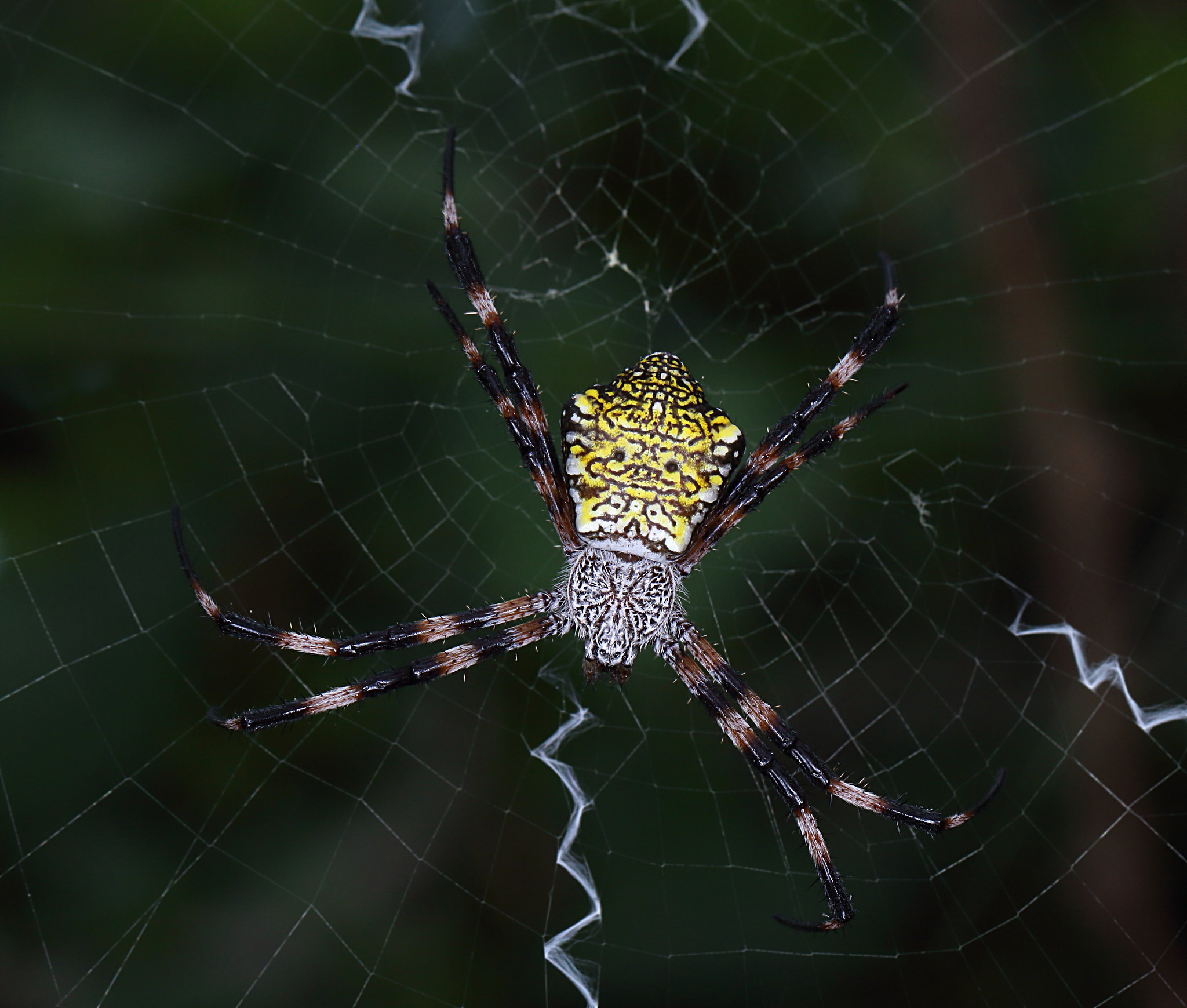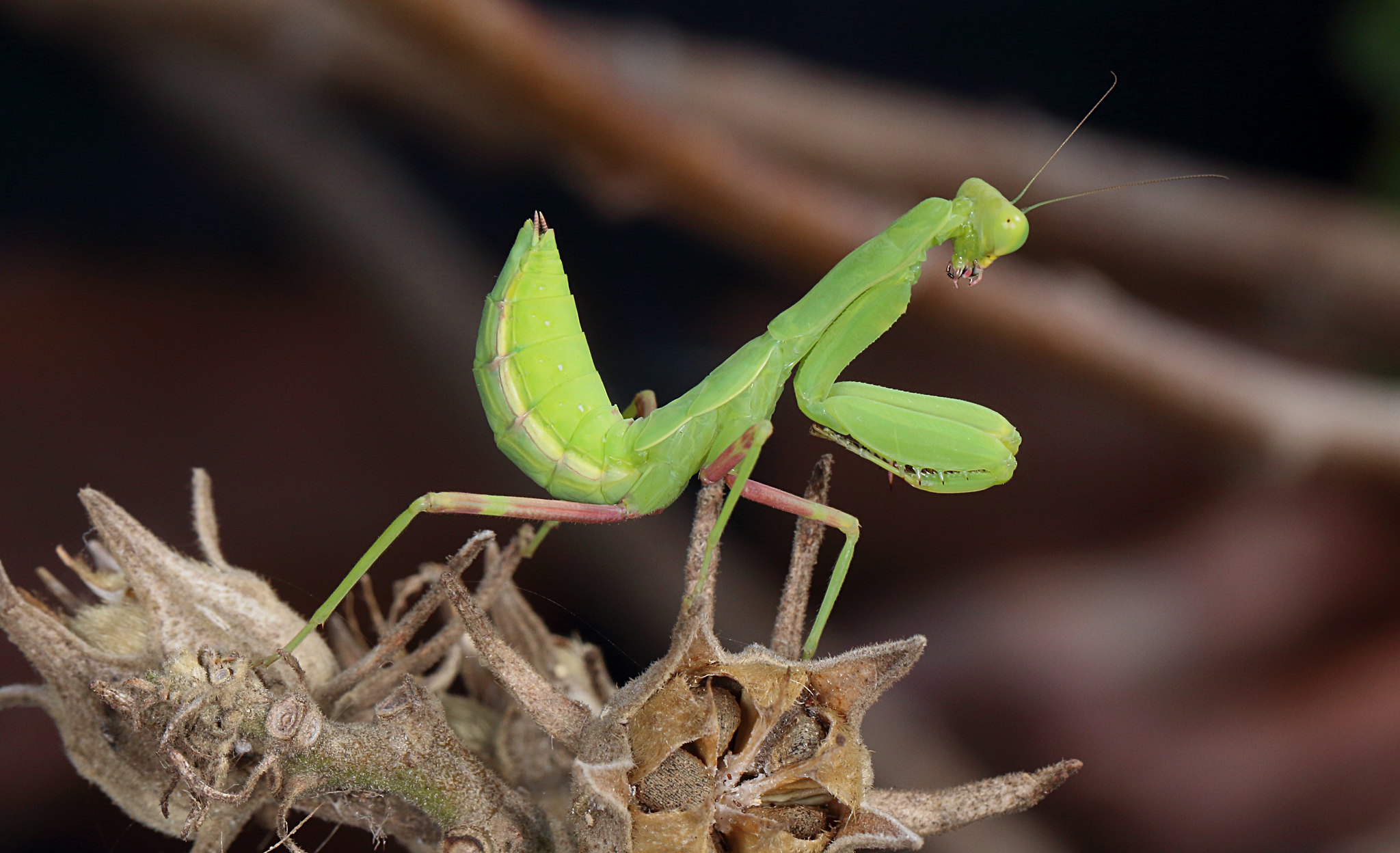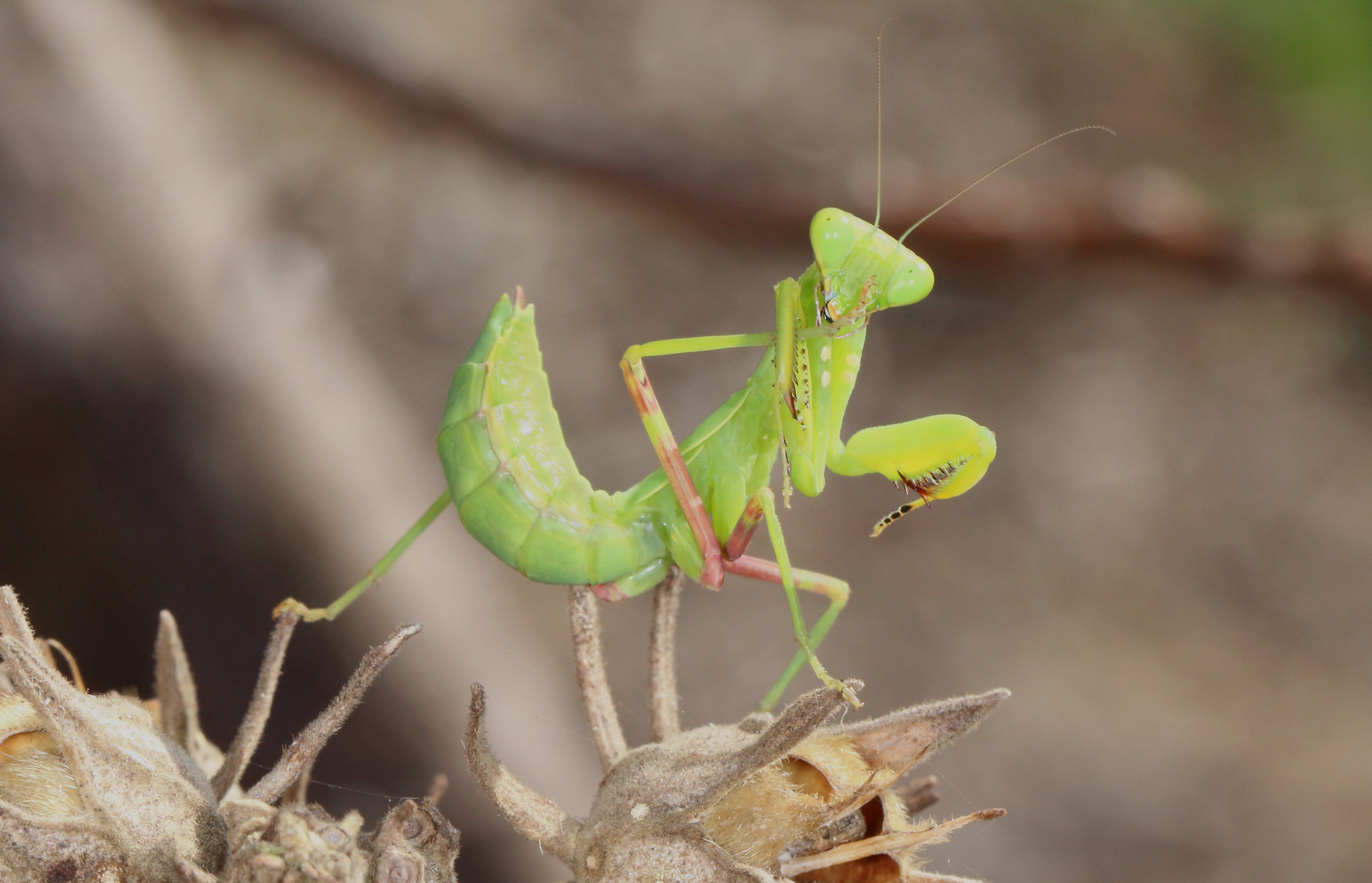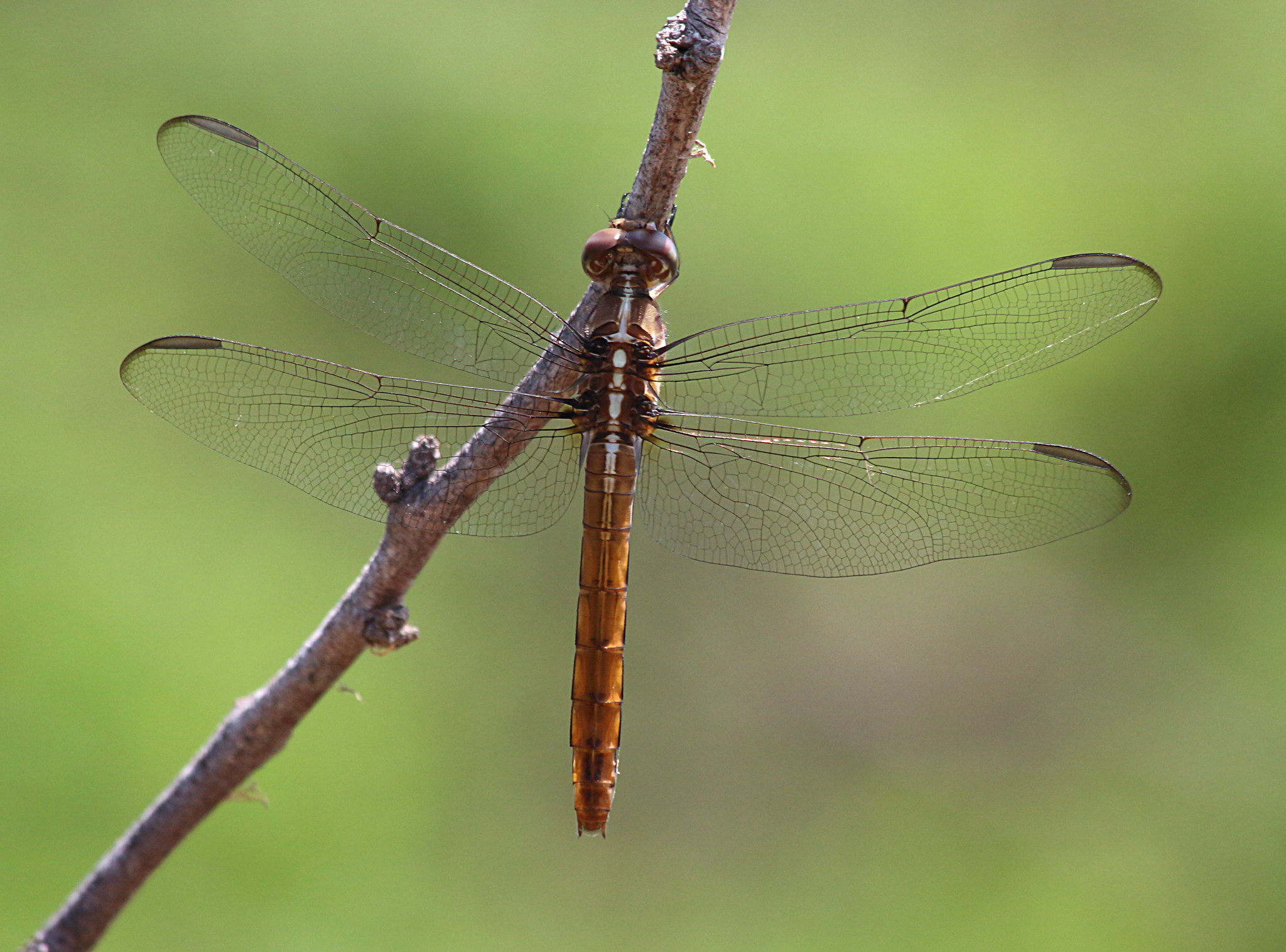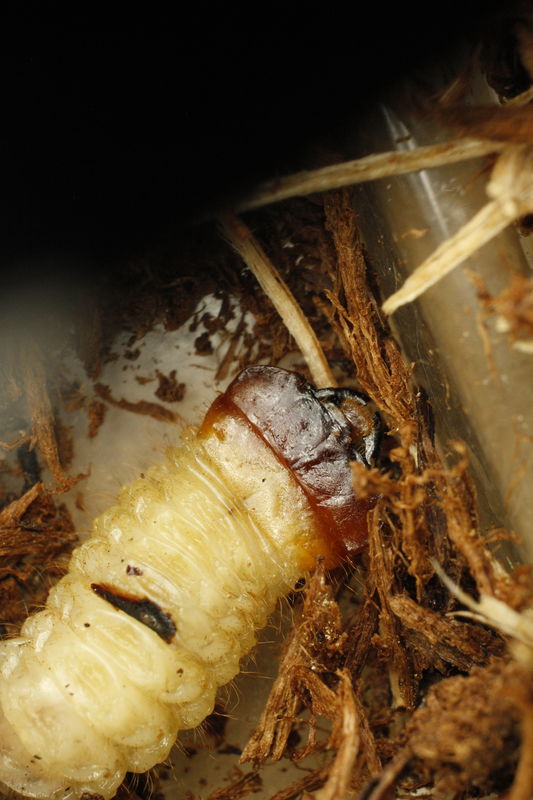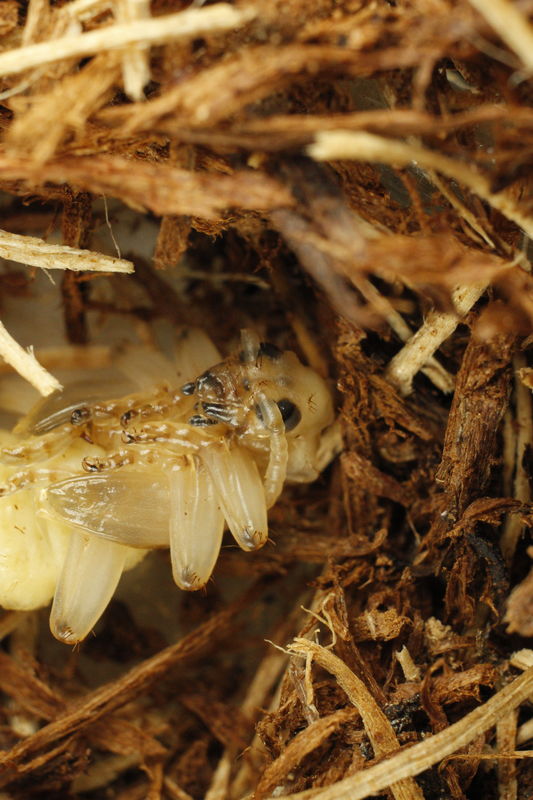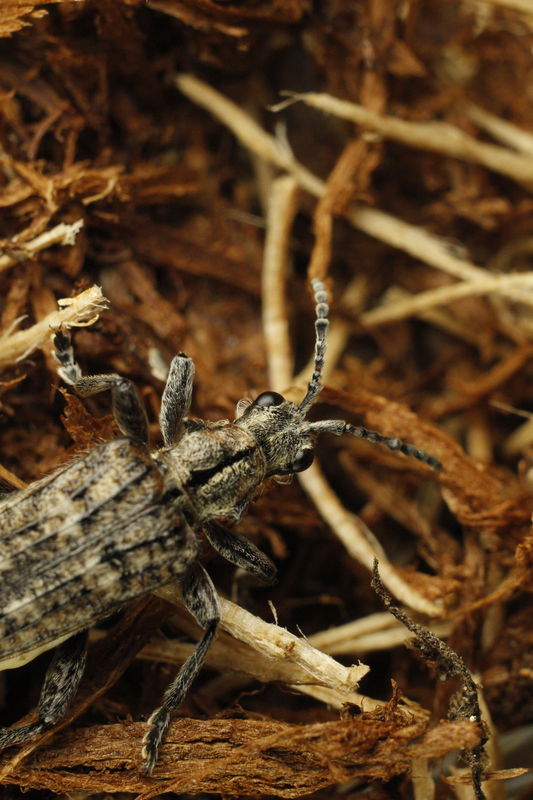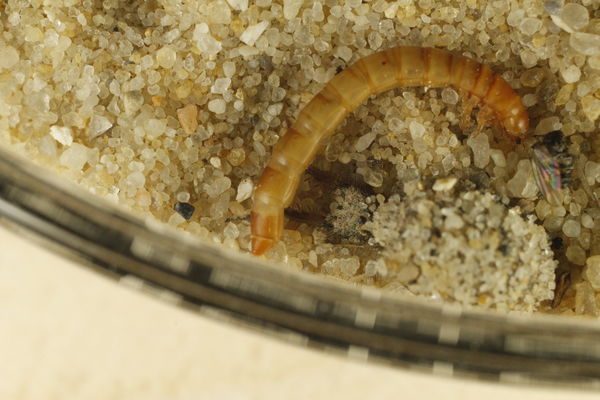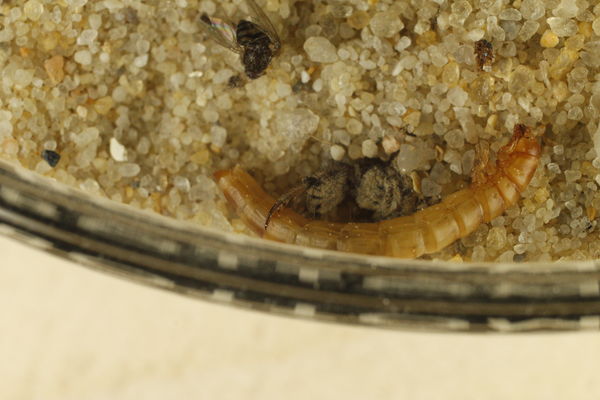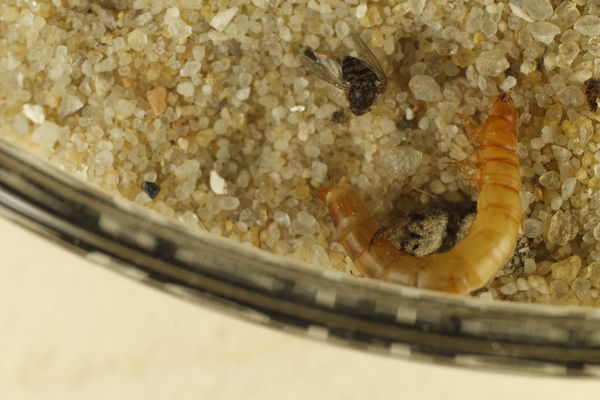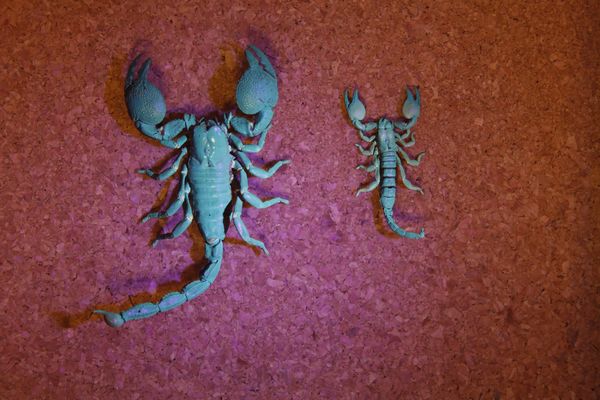Posts for: newtoyou
Dec 11, 2018 01:36:02 #
Mark Sturtevant wrote:
Absolutely. In the rainforests on the north side of the island, saw a lot of Monsteria (did not know the name, but now I do), plus other kinds of Philodendrons (house plants)! that were growing wild. Along with all sorts of bannana trees and palms. Leaves larger than very large dining room tables. So much of that that after a while one just got used to it.
It's fruit resembles a green banana. It is NOT what I call delicious.
Night all.
Bill
As I was looking to find if it is related to bananas( not, by the way) I found that bananas are closely related to ginger. Go figure.
Dec 10, 2018 23:23:49 #
EnglishBrenda wrote:
I don't know which of the Sawfly larvae this is, any ideas anyone? I found it hiding in a Brussel sprout from the garden.
Try to find fecal piles. They are distinctive with Pierids. Look in tight places at leaf bases.
Bill
Dec 10, 2018 23:20:48 #
Mark Sturtevant wrote:
Larva of the grape leaf roller seems in the ballpark. Of course might not be exact species, but shows a general idea. Not a good picture but.. https://bugguide.net/node/view/1095838
Sorry, do not warm to that. Why would a grape roller be wandering? Much less on a Brascid. I see a similarity, but still would go with a Pierid. The head capsule is a close match. And they eat brussel sprouts (I did not untill I had them grilled. OMG, what I was missing).
Bill
Dec 10, 2018 23:11:36 #
relbugman wrote:
The dermestids (Dermestes, etc) used to clean skeletons are much larger and primarily eat partly or fully dried flesh and hair while the carpet beetles (Anthrenus etc.) do well on carpet fibers and accumulated dandruff and other organic debris filtering into rugs even in scrupulously cleaned areas.
Thank you, this 100% correct, as you knew. The larger variaties, mostly Dermestes sp. tend not to be indoors. Unless you call the remains of a dried out former cow indoors. The things we do for our avocations.
Bill
Dec 10, 2018 22:58:25 #
Mark Sturtevant wrote:
Yes, bird of paradise plant. Mental block there for a bit.
I was at Hickam AFB for a couple years, too. Seeing some of our common house plants wild there(Ti plant, the one used in lava scree sliding) is an example. Monsteria delisiosa another. HUGE leaves.
Thanks for the memory nudge.
Bill
Dec 10, 2018 20:36:28 #
Mark Sturtevant wrote:
Here I continue the account of our vacation to Mau... (show quote)
The geckos in the Pacific are many and varied. The day gecko is beautiful. Is the first one on a Bird of Paradise (Strelitzia reginae) flower? When I was on Guam in sixties the geckos were housemates(barracks mates). Open air barracks, screens and fans. The only heaters were in our lockers to prevent mildew. Geckos are vocal. Pleasant 'purrrrr', or low trill.
Lucky that Stagmomantis is small. Probably will not out compete native species. They are fun and easy to rear thru generations. Fruit flies and crickets for feeding.
Interesting posts, thank you.
Bill
Dec 10, 2018 20:22:11 #
EnglishBrenda wrote:
I don't know which of the Sawfly larvae this is, any ideas anyone? I found it hiding in a Brussel sprout from the garden.
I am not sure of sawfly. I have been wrong before, will be again, but, my reasons. The face looks ' wrong' to me. Jaws too prognathious. Cannot see any prolegs(except anal), so loopers are out, and the skin colour and translucence are off. May it be a Pierid larva??
Bill
P.S., is that a mahogany table backdrop??
Dec 10, 2018 19:09:16 #
rwilson1942 wrote:
Thanks, I'll keep watching and see whaat emerges.
Just don't tell my wife
Just don't tell my wife

To tell the wife would infer that she was a poor housekeeper.
I would not go there. Value my well being.
Bill
Dec 10, 2018 19:06:04 #
rwilson1942 wrote:
Found in the cornier of our dining room.
The whole thing is only about 1/4 inch top to bottom.
The insect? at the bottom is ~3-4mm.
Thoughts on an ID?
The whole thing is only about 1/4 inch top to bottom.
The insect? at the bottom is ~3-4mm.
Thoughts on an ID?
These have one redeeming feature. The Smithsonian has a huge colony to clean skeletons. They have a facility in Silver Hill, Maryland that is a behind the scenes amazing place. Elsewhere, Dermestids are not very welcome.
Bill
Dec 9, 2018 17:57:51 #
rwilson1942 wrote:
Found in the cornier of our dining room.
The whole thing is only about 1/4 inch top to bottom.
The insect? at the bottom is ~3-4mm.
Thoughts on an ID?
The whole thing is only about 1/4 inch top to bottom.
The insect? at the bottom is ~3-4mm.
Thoughts on an ID?
As a collector of insects, and once a fly tyer, I know well. It looks to be two (or more) dermestid beetle larva about to pupate. They eat any organic detritus, love dead insect specimens and skin and hair. Look close, there are more. No matter how clean your house, you may have these. These may be what is calledBuffalo Carpet Beetle, Anthrenus scrophulariae. Carefully save(artist brush to collect) and rear out. It will not take long.
Bill
Dec 9, 2018 13:43:18 #
evenic wrote:
Glad this was attack on large thistles in a nearby paddock and not in my garden..
Looking deeper for butterfly larva eating aphids.
The plant looks to be Sow-Thistle, Sonchus oleraceus. An alien in U.S.
The caterpillar looks to be a harvester, Feniseca, sp. tarquinius???
The larva of Sirphids eat aphids, but look like maggots(they are).
As has been said, aphids are interesting. They have one of the most complicated schemes for proliferation of any insect. Seeing one give birth the first time was interesting. Aphids in your garden do suck, tho.😉.
Bill
Dec 8, 2018 18:29:39 #
An early spring beetle. Stenocorus inquisitor. A Larva, last instar, a pupa, and an adult. Found larva in late summer. They pupate in winter and emerge in very early spring. I fooled these by refrigerating and took them out a week ago. This is the result.
Second is an antlion. Without enough depth of sand to build a trap, this one lurks on the surface. Takes food from forceps. These do not react to sight of prey. Only when touched do they react. After taking the mealworm, this one shook it like a dog shakes a rat. Then pulled it under sand to eat. Shot with canon T2I, 40mm lens and 40mm tubes. Continuous light.
Bill
Second is an antlion. Without enough depth of sand to build a trap, this one lurks on the surface. Takes food from forceps. These do not react to sight of prey. Only when touched do they react. After taking the mealworm, this one shook it like a dog shakes a rat. Then pulled it under sand to eat. Shot with canon T2I, 40mm lens and 40mm tubes. Continuous light.
Bill
Dec 8, 2018 17:49:01 #
evenic wrote:
Glad this was attack on large thistles in a nearby paddock and not in my garden..
Fifth picture, a caterpillar, underside of stem on right where the stem curves??
There are some butterfly larva that eat aphids. Is this one?
Bill
Dec 8, 2018 02:07:52 #
Mark Sturtevant wrote:
There are insects that flouresce under UV light, and other arthropods as well. But it is pretty much hit and miss.
So far I found certain dragonflies, after they achieve the white waxy bloom.
Bill
Dec 7, 2018 19:10:46 #
dpullum wrote:
I look at this dull lump and a question dawned on me.... what would it look like illuminated with a UV flashlight. Would it then glow in UV.
So dark and dull, it must spend it life hiding on the bark of trees. I looked at Mr. B reference and it is right on.
So dark and dull, it must spend it life hiding on the bark of trees. I looked at Mr. B reference and it is right on.
If it flouresced, it might look like the appended picture. Scorpions exhibit flouresence, but no insects, to my knowledge.
Bill
